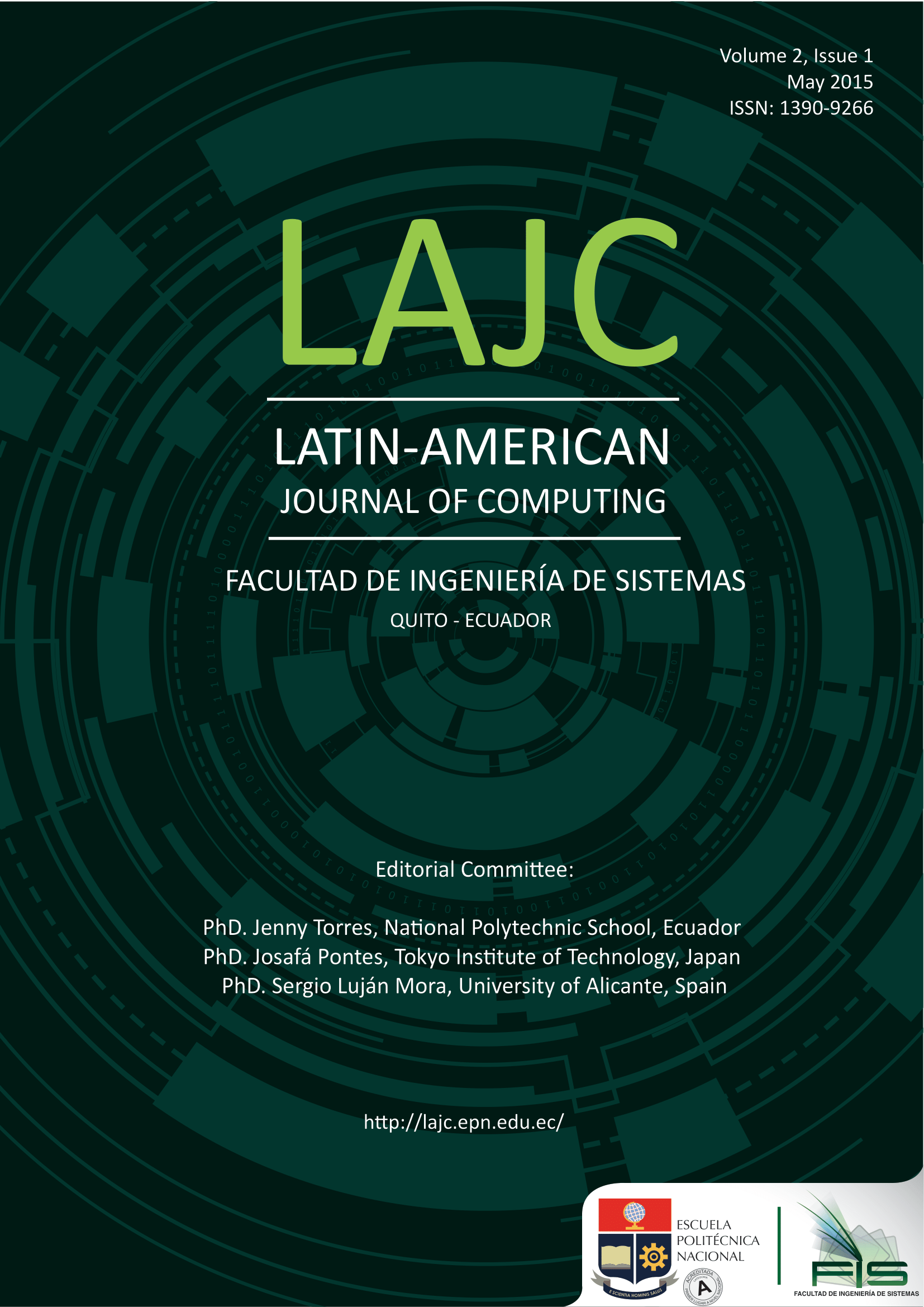Intrusive and Non-Intrusive Load Monitoring (A Survey)
Keywords:
sensors, machine learning algorithms, smart meterAbstract
There is not discussion about the need of energy conservation, it is well known that energy resources are limited moreover the global energy demands will double by the end of 2030, which certainly will bring implications on the environment and hence to all of us.
Non-Intrusive load monitoring (NILM) is the process of recognize electrical devices and its energy consumption based on whole home electric signals, where this aggregated load data is acquired from a single point of measurement outside the household. The aim of this approach is to get optimal energy consumption and avoid energy wastage. Intrusive load monitoring (ILM) is the process of identify and locate single devices through the use of sensing systems to support control, monitor and intervention of such devices. The aim of this approach is to offer a base for the development of important applications for remote and automatic intervention of energy consumption inside buildings and homes as well.
Appliance discerns can be tackled using approaches from data mining and machine learning, finding out the techniques that fit the best this requirements, is a key factor for achieving feasible and suitable appliance load monitoring solutions. This paper presents common and interesting methods used.
Privacy concerns have been one of the bigger obstacles for implementing a widespread adoption of these solutions.
The implementation of security over these approaches along with fine-grained energy monitoring would lead to a better public agreement of these solutions and hence a faster adoption of such approaches. This paper reveals a lack of security over these approaches with a real scenario.
Downloads
References
Uteley, J.; Shorrock, L. Domestic Energy Fact File 2008; Technical Report for Building Research Establishment: Garston, UK, 2008.
Ahmed Zoha, Alexander Gluhak, Muhammad Ali Imra & Sutharshan Rajasegarar; Non-Intrusive Load Monitoring Approaches for Disaggregated Energy Sensing:A Survey, 2012.
Hart, G.W. Nonintrusive appliance load monitoring. IEEE Proc. 1992, 80, 1870–1891.
David C. Bergman, Dong Jin, Joshua P. Juen, Naoki Tanaka, Carl A. Gunter, Andrew K. Wright; Distributed Non-Intrusive Load Monitoring, 2011.
Sidhant Gupta, Matthew S. Reynolds, Shwetak N. Patel; ElectriSense: Single-Point Sensing Using EMI for Electrical Event Detection and Classification in the Home, 2010.
A.G. Ruzzelli, C. Nicolas†, A. Schoofs, and G.M.P. O’Hare; Real-Time Recognition and Profiling of Appliances through a Single Electricity Sensor.
Hicham Elzabadani, Abdelsalam (Sumi) Helal, Bessam Abdulrazak and Erwin Jansen; Self-Sensing Spaces: Smart Plugs For Smart Environments, 2009.
Jung Wook Park, Chao Chen, Hicham Elzabadani, Sumi Helal; SmartPlug: Creating Self-Sensing Spaces using Atlas Middleware, 2009.
Damien Zufferey , Christophe Gisler, Omar Abou Khaled, JeanHennebert; Machine Learning Approaches For Electric Appliance Classification, 2012.
Oliver Parson, Siddhartha Ghosh, Mark Weal, Alex Rogers; Non-intrusive Load Monitoring using Prior Models of General Appliance Types, 2012.
J. Zico Kolter, Matthew J. Johnson; REDD; A Public Data Set for Energy Disaggregation Research, 2011.
Shwetak N. Patel, Thomas Robertson, Julie A. Kientz, Matthew S. Reynolds, and Gregory D. Abowd; At the Flick of a Switch: Detecting and Classifying Unique Electrical Events on the Residential, 2007.
Po-Hsiang Lai, Mark Trayer, Sudhir Ramakrishna, and Ying Li; Database Establishment for Machine Learning in NILM Power Line.
Ulrich Greveler, Peter Glosekotterz, Benjamin Justusy, Dennis Loehry; Multimedia Content Identification Through Smart Meter Power Usage Profiles, 2011.
Hugo Gonçalves, Adrian Ocneanu, Mario Bergés; Unsupervised disaggregation of appliances using aggregated consumption data, 2011.
Downloads
Published
Issue
Section
License
Copyright Notice
Authors who publish this journal agree to the following terms:
- Authors retain copyright and grant the journal right of first publication with the work simultaneously licensed under a Creative Commons Attribution-Non-Commercial-Share-Alike 4.0 International 4.0 that allows others to share the work with an acknowledgement of the work's authorship and initial publication in this journal.
- Authors are able to enter into separate, additional contractual arrangements for the non-exclusive distribution of the journal's published version of the work (e.g., post it to an institutional repository or publish it in a book), with an acknowledgement of its initial publication in this journal.
- Authors are permitted and encouraged to post their work online (e.g., in institutional repositories or on their website) prior to and during the submission process, as it can lead to productive exchanges, as well as earlier and greater citation of published work.
Disclaimer
LAJC in no event shall be liable for any direct, indirect, incidental, punitive, or consequential copyright infringement claims related to articles that have been submitted for evaluation, or published in any issue of this journal. Find out more in our Disclaimer Notice.










